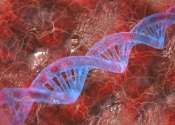In the genetics of congenital heart disease, noncoding DNA fills in some blanks
Researchers have been chipping away at the genetic causes of congenital heart disease (CHD) for a couple of decades. About 45% of cases of CHD have an identifiable cause, including chromosomal abnormalities, genetic variants ...
Apr 8, 2024
0
12









